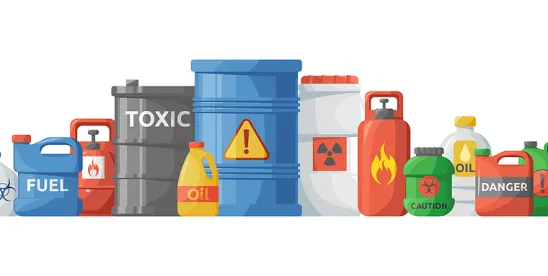We have regularly reported on the EPA‘s long-anticipated rule to designate PFOA and PFOS as “hazardous substances” under CERCLA. In April 2024, the EPA also issued an Advanced Notice of Proposed Rulemaking (ANPRM), which aimed to have seven additional PFAS added to the CERCLA list of “hazardous substances.” EPA originally set a deadline of April 2025 to finalize the rule to add seven additional PFAS to CERCLA; however, EPA’s July 2024 Unified Agenda now indicates that the deadline to finalize the rule for the additional seven PFAS is “to be determined.”
The shift in priorities away from an expanded PFAS CERCLA designation is a significant development that anyone follows PFAS regulatory or litigation news.
CERCLA PFAS Scope Designation To Date
On January 10, 2022, the EPA submitted a plan for a PFAS Superfund designation to the White House Office of Management and Budget (OMB) when it indicated an intent to designate two legacy PFAS – PFOA and PFOS – as “hazardous substances” under the Comprehensive Environmental Response, Compensation & Liability Act (CERCLA, also known as the Superfund law). The EPA previously stated its intent to make the proposed designation by March 2022 when it introduced its PFAS Roadmap in October 2021. Under the Roadmap, the EPA planned to issue its proposed CERCLA designation in the spring of 2022. On August 12, 2022, a CERCLA PFAS designation took a significant step forward when the OMB approved the EPA’s plan for PFOA and PFOS designation. This step opened the door for the EPA to put forth its proposed designation of PFOA and PFOS under CERCLA and engage in the required public comment period.
When OMB initially contemplated approving the EPA’s proposed rule, it designated the rule as “other significant”, which meant that the rule was predicted to have costs or benefits less than $100 million annually. However, the OMB received several pieces of feedback expressing concern that such an estimate fa undervalued the impact that such a designation will have. More specifically, the Chamber of Commerce provided its own estimate that the CERCLA designation would have a cost impact of over $700 million annually. As a result, the OMB changed its designation of the EPA’s propose rule to “economically significant”, which triggered the EPA to have to conduct a RIA prior to proposing the PFAS CERCLA designation. Under the RIA, the EPA will have to provide support for its position that a CERCLA designation is justified to achieve EPA goals and to provide support for the contention that such a designation is the least burdensome and most cost-effective way to achieve the EPA’s goals.
Despite the call for a RIA by the OMB, the EPA nevertheless released its final CERCLA designation in May 2024, the significance of which, if it survives legal challenges, will be felt for some time.
Additional CERCLA Designation
In February 2023, the EPA sent a proposed rule to the OMB that states the following:
“EPA plans to publish in the Federal Register an advance notice of proposed rulemaking requesting public input on whether the agency should consider designating as hazardous substances precursors to PFOA and PFOS, whether the agency should consider designating other PFAS as CERCLA hazardous substances and whether there is information that would allow the agency to designate PFAS as a class or subclass.”
The OMB reviewed the proposal and on March 24, 2023, approved the proposal so as to permit the EPA to proceed with publishing the Advanced Notice of Proposed Rulemaking (ANPRM).
On April 13, 2023, the EPA published in the Federal Register an ANPRM that seeks public comment on a proposal to list as “hazardous substances” the following additional PFAS: PFBS, PFHxS, PFNA, HFPO-DA, PFBA, PFHxA, and PFDA. The EPA indicated that the seven PFAS were chosen based on available toxicity data for the chemicals.
CERCLA PFAS Designation: Impact On Businesses
Once a substance is classified as a “hazardous substance” under CERCLA, the EPA can force parties that it deems to be polluters to either cleanup the polluted site or reimburse the EPA for the full remediation of the contaminated site. Without a PFAS Superfund designation, the EPA can merely attribute blame to parties that it feels contributed to the pollution, but it has no authority to force the parties to remediate or pay costs. The designation also triggers considerable reporting requirements for companies. Currently, those reporting requirements with respect to PFAS do not exist, but they would apply to industries well beyond just PFAS manufacturers. The CERCLA PFAS scope in any final regulation is therefore critical to numerous industries that were or are downstream users of PFAS.
The downstream effects of a PFOA and PFOS designation would be massive, but a designation of the entire class of PFAS or even various subclasses of PFAS would be potentially unquantifiable in financial magnitude. With over 15,000 PFAS in existence according to the EPA and many of them in continued use to this day, the potential environmental pollution ramifications touch on countless industry types. Companies that utilized PFAS in their industrial or manufacturing processes and sent the PFAS waste to landfills or otherwise discharged the chemicals into the environment will be at immediate risk for enforcement action by the EPA given the EPA’s stated intent to hold all PFAS polluters of any kind accountable. Waste management companies should be especially concerned given the large swaths of land that are utilized for landfills and the likely PFAS pollution that can be found in most landfills due to the chemicals’ prevalence in consumer goods. These site owners may be the first targeted when the PFOA/PFOS designation is made, which will lead to lawsuits filed against any company that sent waste to the landfills for contribution to the cost of cleanup that the waste management company or its insured will bear. However, with a broader PFAS designation a possibility now, there should naturally be concern regarding re-openers in the future for these same sites.
Of course, all of the above are subject now to legal challenges of the final CERCLA designation, which will play out over the next several months. In addition, EPA (and the rest of the country) are now living in a post-Chevron world, which is sure to have significant impacts on challenges to EPA’s intentions with respect to PFAS under CERCLA. It is perhaps for these reasons that EPA recently adjusted its deadline to finalize the expended PFAS CERCLA designation to a status of “to be determined.” This is quite significant and shows to me that EPA is adjusting its resources to prepare for the legal challenges to come, as well as focusing more earnestly on initiatives that it can pass prior to a potential shift in party power in the November 2024 elections.
Conclusion
While it is likely fair to say that almost all significant PFAS initiatives that EPA wishes to undertake will not be pushed forward until after the November election cycle, it is nevertheless of great importance for companies, insurers, and financial world specialists to continue to monitor PFAS developments. Even with a party shift in November, PFAS is unlikely to be wiped off of the map, so to speak, in terms of an environmental issue. The awareness of PFAS issues among media, politicians and citizens is simply too great at this point. In addition, developments that will be critical to monitor because of the impact that they may have on PFAS litigation, which will surely subsume PFAS regulatory impacts if November brings a party power shift.




 />i
/>i

